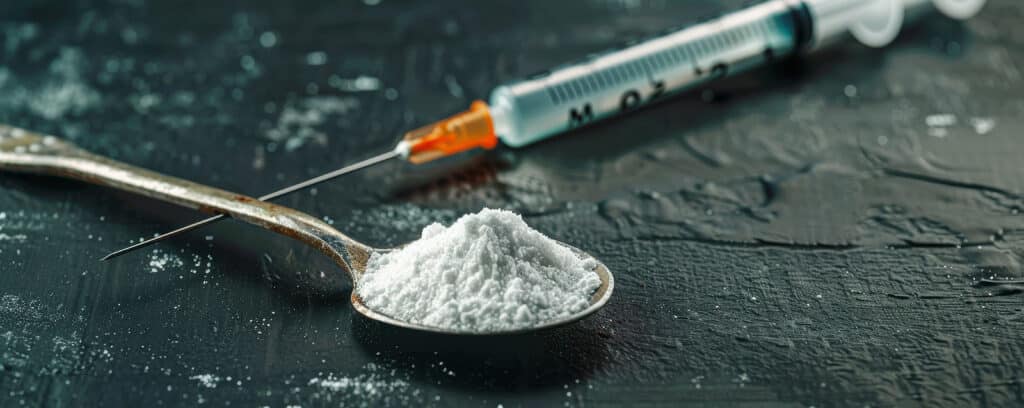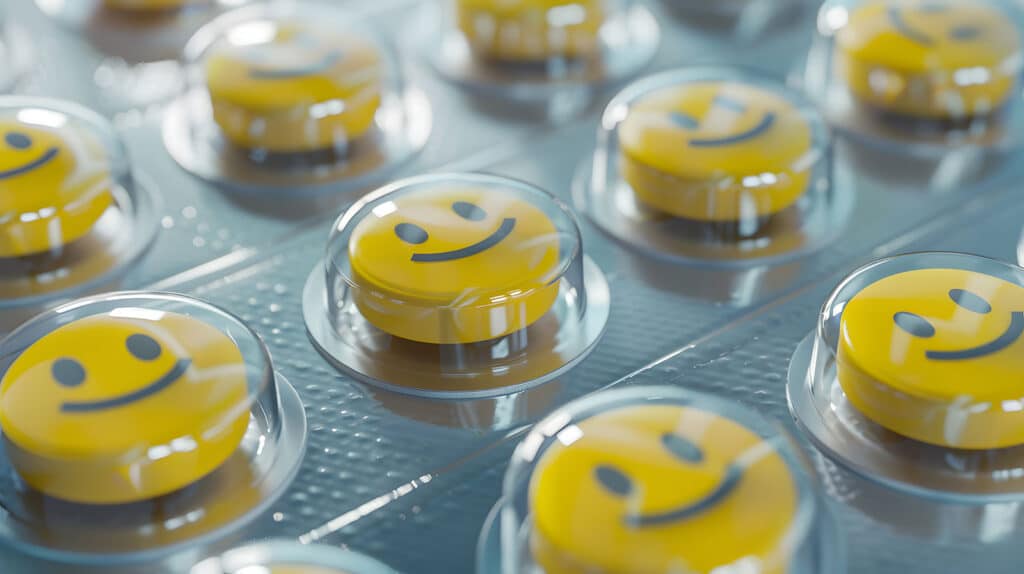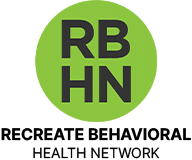Stimulants are a class of drugs that boost brain activity and speed up the body’s systems. Because of their positive effects on a person’s physical and mental performance, they’re one of the most commonly abused substances, not just in New Jersey, but also in the United States.
While some stimulant drugs serve a medical purpose, others are used illegally, which can lead to negative health conditions, including addiction, withdrawal, and in severe cases, death.
This guide will cover everything you need to know about stimulants, from abuse to treatment options and recovery.
What Are Stimulants and How Do They Work?
Stimulants, also known as “uppers,” are a group of drugs that affect the body’s central nervous system, temporarily boosting levels of alertness, focus, energy, and productivity. They can also increase your heart rate, breathing, and blood pressure.
Stimulant drugs work by increasing neurotransmitter activity in the brain, specifically dopamine, serotonin, and norepinephrine. Because of their desirable effects and the way they impact the brain and body, these drugs have a high potential for misuse.

Types of Stimulants
Prescription stimulants come in the form of tablets or capsules and should only be taken as instructed by a doctor. These include Ritalin, Dexedrine, Concerta, and Adderall, which are used to treat symptoms of Attention Deficit Hyperactivity Disorder (ADHD) and narcolepsy.
Legal stimulants include caffeine that’s commonly found in coffee as well as nicotine from cigarette products. Illegal stimulants include cocaine and methamphetamine, among others.
Side Effects of Stimulants
Stimulants can induce both short-term and long-term side effects, depending on the type of drug that a person has taken, how it was used, and the amount and frequency of use. The user’s tolerance, metabolism, body weight, and health conditions can also influence their reaction.
Negative side effects of stimulants include the following:
- Reduced appetite and weight loss
- Anxiety
- Jitteriness
- Insomnia
- Headaches
- Sweating
- Chest pain
- Palpitations
- High blood pressure
- Shortness of breath
- Seizures
- Psychosis
- Paranoia
How Stimulant Addiction Happens
Stimulant addiction usually occurs in people who turn to external sources and substances to increase their energy, mental focus, and productivity. In some cases, stimulants are misused to enhance self-esteem, reduce the appetite, or produce feelings of exhilaration or euphoria.
After heavy, frequent, or long-term use, a person’s brain will start to become reliant on the stimulant drug and their body may develop a physical dependence on it. If they suddenly try to quit, they may experience painful or harmful stimulant withdrawal symptoms.
Stimulant abuse and addiction can occur when:
- The stimulant is taken without following the doctor’s instructions, such as in higher or more frequent doses, or in a different form than prescribed
- The stimulant is taken for its euphoric effects and not for its intended medical purpose
- The stimulant was illegally bought off the street or prescribed for someone else

Signs of Stimulant Addiction
A formal diagnosis of stimulant addiction, also referred to as stimulant use disorder, can only be made by a qualified healthcare professional. However, it can be helpful to understand the potential signs of addiction, so that you or a loved one can seek help when necessary:
- Continuing to use more of a stimulant for a longer time without being able to stop
- Constant cravings, urges, or desires to use the drug
- Spending a lot of time trying to get and use the stimulant
- Deteriorating physical health
- Relationship, school, work, or financial problems due to drug use
- Repeated unsuccessful attempts to minimize or stop using the stimulant
- Loss of time or interest in recreational, social, or professional activities
- Ongoing use despite experiencing negative consequences
Someone who is developing stimulant addiction may also experience increased aggression, risk-taking behavior, irritability, confusion, rapid speech, sweating, dilated pupils, persistent nosebleeds, twitches or tremors, mouth or skin issues, and a reduced need for sleep.
What Are the Symptoms of Stimulant Withdrawal?
When using stimulants for a prolonged amount of time, a person’s body becomes dependent on the substance, and the brain gets used to relying on it for cognitive function and focus.
They may experience withdrawal symptoms if they try to stop or reduce the amount they usually take, beginning around 24 to 72 hours after their last use.
Withdrawal symptoms vary from person to person and can be both physical and psychological in nature. They range from moderate to severe and can cause users to relapse, become violent, or attempt to self-harm. This is why professional help is crucial when trying to quit.
Stimulant dysphoria is a common withdrawal symptom described as the opposite of euphoria. It’s accompanied by feelings of unease or unhappiness in one’s life. Other symptoms include:
- Anxiety
- Mood swings
- Sleep disturbances
- Fatigue and body aches
- Headaches
- Hallucinations
- Dulled senses
- Irritability
- Restlessness
- Aggression
- Impaired memory
- Intense drug cravings
Generally, most withdrawal symptoms peak around a week after the last use of the stimulant.
However, some psychological symptoms, such as depression, can last for weeks or months after a person quits. People with co-occurring mental health disorders or addictions to other substances may experience more intense or severe symptoms and a longer withdrawal period.

How to Treat Stimulant Addiction
With the right treatment program, a full recovery from stimulant addiction is always possible.
To ensure effectiveness, treatment must be tailored to every patient’s needs, and will often involve a combination of therapy, medication, support groups, and other services.
Here are some available treatment options for stimulant addiction:
1. Medical Detox and Withdrawal Care
The first step in treating stimulant addiction is to do a medically supervised detox. This process enables the patient to cleanse the stimulants out of their system safely and manage withdrawal symptoms comfortably, under the guidance of a doctor or a team of medical professionals.
Depending on the stimulant used, the patient might be advised by a doctor to quit the drug “cold turkey” or to gradually reduce use, also known as tapering. They may also prescribe medications to treat withdrawal symptoms like depression or insomnia.
Medical detox can last for one week or more, depending on the severity of the addiction. People who misuse stimulants in larger doses or for a longer period take longer to finish detox.
The type of stimulant used also has an impact on the time it takes for someone to detox. A person who is suffering from addiction to prescription stimulants may take longer to eliminate them from their system, as they’re formulated to last longer and build up in the body over time.
2. Inpatient Treatment for Stimulant Addiction
Inpatient or residential treatment provides patients with 24-hour supervised care at a live-in treatment facility. They’ll receive both physical and psychiatric support as they strive to overcome stimulant addiction and other underlying mental health conditions.
The typical duration of inpatient rehab is 30 to 90 days, with the goal of helping patients lead an independent, drug-free lifestyle after treatment. During this time, patients will learn about relapse prevention tactics, stress management techniques, coping skills, and healthy communication, among others.
3. Outpatient Treatment for Stimulant Addiction
As its name implies, outpatient treatment doesn’t require living in a treatment facility or receiving round-the-clock care. Instead, it involves regularly scheduled visits several times a week to help patients transition to a healthy way of life as they recover from stimulant addiction.
This type of treatment is ideal for patients who have family, school, or work responsibilities and can’t leave for weeks at a time for inpatient rehab. It can include individual or group therapy sessions, weekly counseling, and educational programs on addiction and relapse prevention.
Outpatient rehab can be an initial treatment for people suffering from mild to moderate addiction. It can also be part of an aftercare or step-down program after completing inpatient treatment.
4. Therapy and Support Groups
Stimulant addiction can be the result of an underlying issue, such as a mental health condition, past trauma, or an unhealthy relationship. Ongoing therapy can help patients recover from the psychological part of addiction and let go of the thought patterns and behaviors behind it.
A therapist can help a patient identify the situations that trigger their compulsive desire to use stimulants and how to effectively manage them. Evidence-based therapies that can be helpful include cognitive behavioral therapy (CBT) and dialectical behavior therapy (DBT).
Support groups can also be beneficial in treating stimulant addiction and substance abuse. They provide a source of comfort and community for patients during the recovery process. The most well-known support groups are 12-step programs and SMART Recovery groups.

Finding the Best Stimulant Addiction Treatment in New Jersey
Breaking free from stimulant addiction can sound like a big challenge, but you don’t have to do it on your own. Seeking help from a treatment center like Garden State Detox can be your first step toward lasting recovery and a happier, healthier, and drug-free life.
Located in a scenic area of northern New Jersey, just south of Lake Mohawk and an hour’s drive from Newark Airport, Garden State Detox is the perfect place to start your recovery journey. We offer a wide range of treatment options, including medical detox and therapy. Explore our easy 3-step admission process, which includes a confidential evaluation, free insurance verification, and intake assessment. Reach out today by calling us or visiting our contact page. It’s time to say goodbye to addiction and say hello to a drug-free life!


